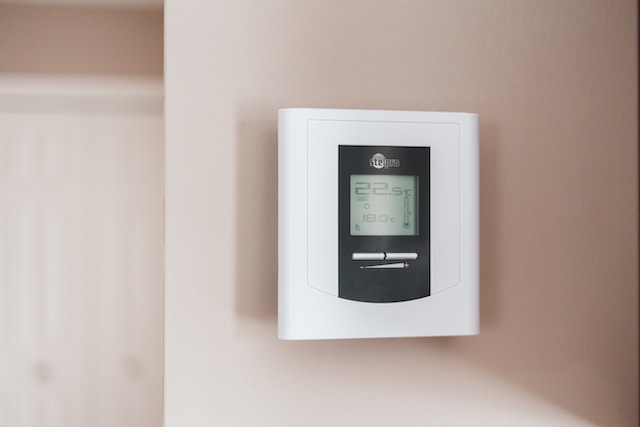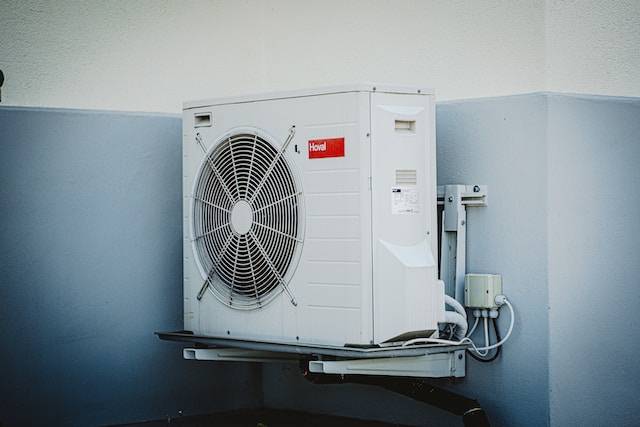
Picture this: it’s a chilly winter morning, and you’ve just arrived at your office. You’re greeted by the familiar hum of computers and the chatter of your colleagues as they catch up over a steaming cup of tea or coffee. As you settle into your desk, you can’t help but notice an icy draft nipping at your fingers, making it almost impossible to concentrate on your work. On the flip side, imagine it’s a sweltering summer afternoon, and the heat is overwhelming, leaving you feeling lethargic and longing for the comfort of an air-conditioned room. In both scenarios, you find yourself yearning for a comfortable environment that allows you to focus and be productive.
The truth is, office temperature plays a crucial role in employee comfort, well-being, and productivity. As anyone who has ever worked in an office knows, finding the perfect temperature can be a challenging task. Too cold, and employees are shivering in their seats, reaching for an extra jumper; too hot, and they’re fanning themselves, struggling to concentrate amidst the heat. Striking the right balance is not only essential for keeping everyone comfortable, but also for ensuring a healthy and productive work environment. But how do you navigate the tricky terrain of office temperature in the United Kingdom?
In this article, we’ll unravel the mystery surrounding the UK’s minimum and recommended office temperature guidelines, giving you the tools you need to create the ideal office environment. From understanding the rationale behind these guidelines to exploring the factors that influence office temperature, we’ll leave no stone unturned in our quest to crack the code on this age-old question.
In the following sections, we’ll dive deeper into the world of office temperature, examining the cold hard facts behind the minimum working temperature guideline, as well as the factors that contribute to achieving the perfect balance in the recommended range. We’ll also discuss various temperature management solutions and explore other aspects of creating a comfortable office environment that goes beyond temperature alone.
So, grab your thermometers and put on your thinking caps, as we embark on a journey to decode the UK’s office temperature conundrum!

The UK’s Temperature Guidelines: A Snapshot
Before we dive into the intricacies of the UK’s office temperature guidelines, it’s crucial to understand the overarching regulations that govern workplace environments. The Workplace (Health, Safety and Welfare) Regulations 1992 are a set of rules established to ensure that employers provide a safe and comfortable working environment for their employees. These regulations cover various aspects of workplace health and safety, including temperature, ventilation, lighting, and cleanliness.
When it comes to a safe working temperature, the Workplace (Health, Safety and Welfare) Regulations 1992 outline two key guidelines that employers should adhere to:
Minimum Office Temperature in the UK: 16 °C
The regulations specify that employers must maintain a minimum office temperature of 16 °C. This temperature serves as a baseline to protect workers from the adverse effects of working in excessively cold conditions. When the temperature falls below this threshold, employees may experience discomfort, decreased productivity, and increased risk of illness due to the cold.
Recommended Office Temperature in the UK: 20-21 °C
When it comes to the recommended office temperature, UK regulations suggest an optimal range of 20-21 °C. This range has been identified as conducive to both comfort and productivity, offering an ideal working environment for employees. While this recommended range for workplace temperatures is not legally binding, employers are encouraged to aim this normal operating temperature as a general rule of thumb.

Minimum Office Temperature: The Cold Hard Facts
Understanding the rationale behind the 16 °C minimum temperature is crucial for employers who strive to create comfortable and productive workspaces. The primary reason for establishing this baseline temperature is to protect employees from the negative effects of working in excessively cold conditions, something which the UK is all too familiar with. Let’s delve into the reasoning behind this reasonable temperature guideline and its implications on productivity and employee well-being.
The Rationale Behind the 16 °C Minimum Office Temperature
The 16 °C minimum temperature guideline is rooted in research and expert opinions on human comfort and performance in cold environments. Prolonged exposure to cold working temperatures can affect employees’ ability to concentrate, make decisions, and perform manual tasks. Consequently, the 16 °C threshold is designed to mitigate these negative effects, ensuring a safe and productive work environment.
Impact of Cold Office Environments on Productivity and Employee Well-being
Cold office environments can have a significant impact on employees’ productivity and well-being. When the temperature falls below the recommended minimum, employees may experience:
- Reduced focus and concentration
- Decreased manual dexterity
- Increased risk of cold-related illnesses
- Lower morale and job satisfaction
These factors can lead to a decline in overall productivity and contribute to increased absenteeism, ultimately affecting a company’s bottom line.
Tips for Maintaining the Minimum Office Temperature
Employers can take several measures to maintain the minimum temperature and ensure a comfortable working environment. Some practical tips include:
Inspect and maintain heating systems regularly: Ensure that heating systems are functioning efficiently and are well-maintained. Schedule regular inspections and repairs as needed.
Invest in proper insulation and draft-proofing: Install adequate insulation and draft-proofing measures, such as double-glazed windows, to reduce heat loss and prevent cold drafts from entering the office.
Optimise office layout: Arrange workstations away from draughty areas or cold exterior walls. Consider using partitions or screens to create a barrier against drafts.
Provide additional heating options: In particularly cold areas or during extremely cold weather, provide employees with supplementary heating options, such as space heaters or heated seat cushions.
Encourage employees to dress appropriately: Encourage workers to wear warm, layered clothing and provide guidelines on appropriate office attire for cold weather.

Recommended Office Temperature: Striking the Perfect Balance
While maintaining the minimum temperature of 16 °C is essential, striving for the recommended temperature range can significantly enhance the overall working environment.
The recommended office temperature range of 20-21 °C is based on research that indicates this is the optimal range for human comfort and productivity. Within this reasonable working temperature range, employees are more likely to feel comfortable, alert, and focused, which can translate to improved performance and reduced error rates.
Benefits of Maintaining the Recommended Office Temperature
There are several advantages to maintaining a comfortable office, including:
Improved productivity: Employees are more likely to stay focused and engaged in their work when they are comfortable in their surroundings.
Enhanced employee well-being: A comfortable office can contribute to overall employee satisfaction, reducing stress and promoting a positive work atmosphere.
Reduced absenteeism: Employees are less likely to fall ill or take time off due to temperature-related discomfort when the office is maintained within the recommended range.
Greater energy efficiency: Operating within the recommended temperature range can lead to more efficient energy use, potentially reducing utility costs and lowering a company’s carbon footprint.
Suggestions for Achieving Ideal Temperatures
Achieving the ideal workplace temperature involves a combination of proactive measures and ongoing monitoring. Some practical tips for maintaining the recommended working temperature range include:
Install a programmable thermostat: A programmable thermostat can help regulate the office more effectively, allowing you to set specific temperature ranges and schedules for different times of the day or week.
Monitor and adjust temperature settings regularly: Regularly check and adjust the thermostat settings to ensure the office remains within the recommended temperature range. Encourage employees to report any temperature-related discomfort so that adjustments can be made promptly.
Utilise energy-efficient heating and cooling systems: Invest in energy-efficient HVAC systems to maintain the recommended office temperature while reducing energy consumption and costs.
Implement proper ventilation and airflow: Ensure that the office has adequate ventilation and airflow to maintain a consistent temperature throughout the workspace.
Encourage open communication: Foster an environment where employees feel comfortable discussing temperature preferences and concerns. This can help identify potential issues and encourage collaboration in finding solutions to maintain the ideal office temperature.

Factors Influencing Office Temperature
While understanding and adhering to the UK’s office temperature guidelines is crucial, it’s also essential to recognise that various factors can affect office temperature. In this section, we’ll explore some internal and external factors that can influence office temperature and offer suggestions for mitigating temperature fluctuations.
Internal Factors Affecting Office Temperature
Several internal factors can impact the temperature within an office, including:
Ventilation: Inadequate ventilation can lead to stuffy or stagnant air, making it difficult to maintain a consistent office temperature.
Heating and cooling systems: Poorly maintained or inefficient heating and cooling systems can result in uneven temperatures and difficulty maintaining the recommended range.
Insulation: Insufficient insulation can cause heat loss during colder months and heat gain during warmer months, leading to temperature fluctuations.
External Factors Affecting Office Temperature
External factors can also play a role in influencing office temperature, such as:
Building location: Offices located in areas with extreme temperature fluctuations or harsh weather conditions may experience more significant challenges in maintaining a consistent temperature.
Window orientation: The orientation of windows can affect the amount of sunlight entering the office, potentially leading to increased heat gain or loss.
Seasonal weather changes: Seasonal variations in temperature, humidity, and sunlight can impact the office environment, requiring adjustments to heating and cooling systems throughout the year.

Temperature Management Solutions for the Modern Office
Creating a comfortable and productive work environment requires effective temperature management. Fortunately, a variety of innovative tools and solutions can help employers maintain the ideal office temperature. In this section, we’ll introduce several temperature management tools and solutions, discuss the benefits of implementing energy-efficient temperature management systems, and offer tips for selecting the right solution for different office spaces.
Temperature Management Tools and Solutions
Several modern tools and solutions can help employers maintain optimal office temperatures:
Smart heating systems: Smart heating systems can be controlled remotely, offer advanced features like learning algorithms, and can adjust the temperature based on occupancy or user preferences.
Zoned heating and cooling: This approach divides the office into separate temperature zones, providing more precise control over heating and cooling in different areas of the workspace.
Benefits of Implementing Energy-Efficient Temperature Management Systems
Investing in energy-efficient temperature management systems offers several advantages:
Cost savings: Energy-efficient systems often consume less energy, leading to reduced utility costs.
Environmental impact: Lower energy consumption can contribute to a reduced carbon footprint, aligning with corporate sustainability goals.
Improved comfort: Advanced temperature management systems can provide more consistent and comfortable office environments, leading to increased productivity and employee satisfaction.
Tips for Selecting the Right Temperature Management Solution
When choosing a temperature management and air conditioning solution for your office, consider the following factors:
Office size and layout: The size and layout of your office will impact the type of temperature management system that will work best. Larger or more complex spaces may benefit from zoned heating and cooling, while smaller offices might find programmable thermostats sufficient.
Budget: Determine a budget for your temperature management system and select a solution that provides the best value for your investment.
Energy efficiency: Look for solutions with high energy efficiency ratings to maximise cost savings and minimise environmental impact.
Integration with existing systems: Ensure that the temperature management solution you choose is compatible with your office’s existing HVAC systems and infrastructure.
Ease of use: Select a solution that is user-friendly and easy for employees to understand and operate.
By implementing modern temperature management solutions in indoor workplaces, employers can effectively maintain the ideal office temperature, leading to a comfortable and productive work environment that complies with the UK’s office temperature guidelines.

Wrapping Up
In this article, we’ve explored the importance of understanding and adhering to the UK’s office temperature guidelines, which include maintaining a minimum office temperature of 16 °C and striving for the recommended range of 20-21 °C. By following these guidelines, employers can create a comfortable, safe, and productive work environment that supports the well-being and satisfaction of their employees.
To optimise your office space, we encourage you to evaluate the factors influencing your office temperature, such as heating and cooling systems, ventilation, insulation, and external conditions. Implementing modern temperature management solutions, like programmable thermostats, smart heating systems, or zoned heating and cooling, can help maintain the ideal temperature and contribute to an energy-efficient and comfortable workspace.
We invite you to share your own temperature management experiences or strategies in the comments below. By exchanging insights and best practices, we can collectively foster a better understanding of how to create optimal office environments that promote the well-being and productivity of employees across the UK.
If you’re looking for the ideal office space in London that offers a comfortable and productive work environment, London Office Space can help! We provide an extensive range of flexible office solutions tailored to your specific needs. Reach out to our team of experts today, and let’s create a workspace that keeps your employees comfortable, focused, and productive!
